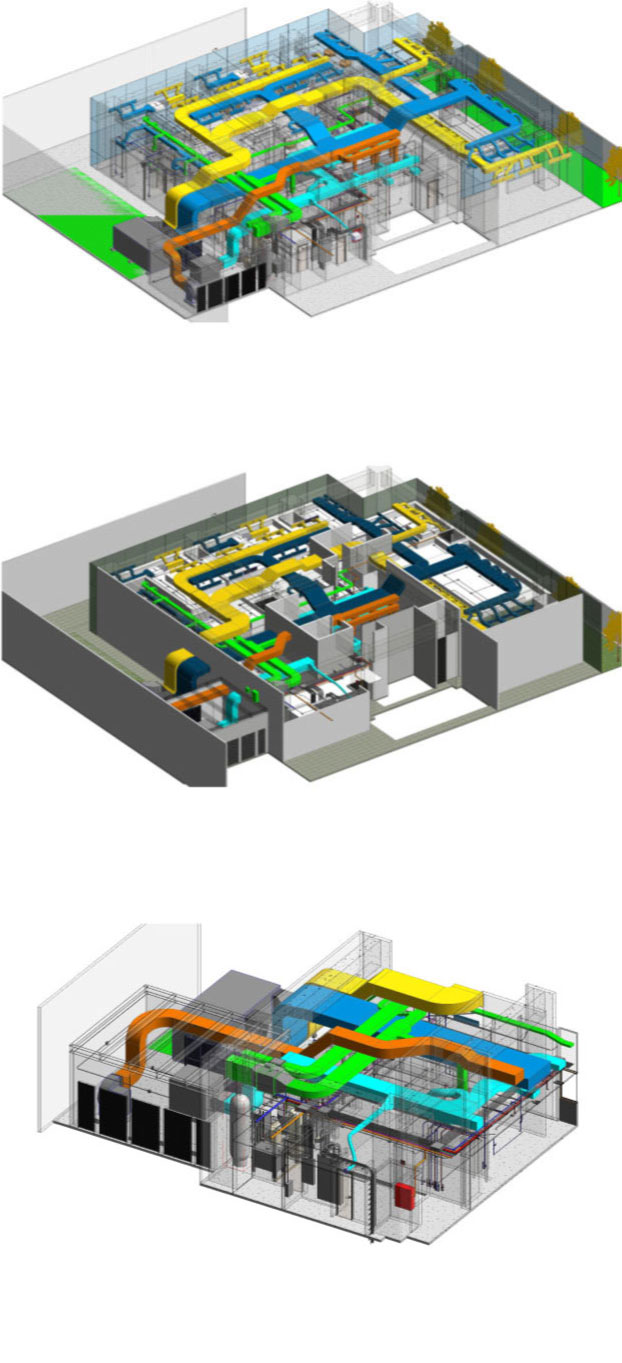
BIM
Building Information Modeling (BIM)
BIM is not a software, it is a collaborative process and a strategy of cutting-edge design to improve the exchange, coordination and organization of all technical-constructive information of the project, which consists of a virtual model with all the constructive information of the building, architecture, structure, engineering and site) integrated into a single 3D file.
- Previous analysis of Costs
We support the customer from the stage of pre-design, visualize, and analyze most practical and agile, the possible scenarios of investment that will contribute to decision making in this phase of the project. Through a model volumetric and cost-parametric tests on the actual siting, we model, design prototypes and financial statements to evaluate budgets and investment
- Architectural Modeling
We develop a constructive model, with all the technical information and characteristics of the different elements and sections, architectural. This model and its information contained serves as a basis for the other specialties and to define from the beginning of the specification and constructive solutions that will have the building, in addition to containing information that will subsequently be used for different analyses, such as integration, quantification, management of the construction, operation and maintenance.
- Integration of Engineering
In our experience, one of the main demands of the customer and of the different stakeholders, investors, end-customer, gerenciadoras, etc, is the application of an integrated project, that is to say, the delivery of a project that during all the process, joined and met the needs and requests of the other disciplines. We develop integrated projects, full-time, form and content.
- Interference detection (clash detection)
The natural result of this integration of engineering disciplines is the due analysis and resolution prior conflicts, which has as a result a model structurally viable with all of their real characteristics considered, with the aim of preventing rework, delays and extra costs in the work.
- Quantification of Materials (Schedule / Quantities sheets)
An architectural model well-developed allows for the analysis and optimum utilization of its different elements, which help to maintain the financial control of the project and subsequent analysis of quantification, costs and surfaces. In addition to contributing to improve the management of work, in its different stages or phases of construction.
- Documentation of the Project in 2D (flat) and 3D
Another of the benefits of BIM, is a better understanding and visualization of the project, when modeling the building can be obtained constantly, and in an agile manner, a variety of documentation, 2d and 3d that contributes to a better understanding and resolution of the project on the part of all involved, in addition to reducing the time of change requests, adjustments in the final documentation and RFIs during the work
- Sequence Constructive (Video)
Linkage and mapping of elements of the model to a schedule (stages and times), allows to understand the construction process and control the participation of the different teams in the execution, as well as the linkage to the control budget, income and expenses of the project during the work.





